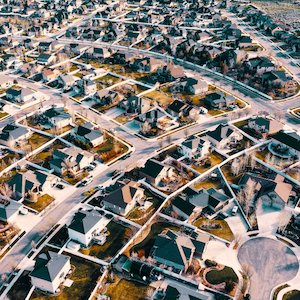|
Part of learning about the world around us in primary grades is learning about different kinds of communities. One of my favorite activities to do with primary kids is create a 3D community in my classroom. This is a very child centered unit and involves many different aspects before the community is actually created. Steps For Creating A CommunityHave you ever thought about creating a community with your class? I have done this a few times and it has always been a favorite memory for my students. First of all, it is important the children understand what a community is and what kinds of communities there are. We look at resources that represent urban, suburban, and rural communities and we talk about what makes them the same or different. We talk about what they look like, what kinds of services they might have, and what different kinds of community helpers might be involved there. We also talk about where we might find these types of communities. Next we take neighborhood walks and we look at the area around us. We take note of the various types of buildings, services, parks, etc. We also think about where they are located in relation to each other. We discuss what other services might be nearby and why they might be important. We also think about other services that might be in the community, but located in different areas. For example, the essential services might be located in the center of the community, but an airport might be located on the outskirts of the community. We then think about what services are needed, and what services might be nice to have, but are not essential. For example, some shopping centres are needed, but it is not necessary to have several different ones. Planning The 3D CommunityOnce we determine that some services are needed and some are maybe just nice to have, we decide which ones will be included in the community that we create. This is where the neighborhood planning come in. We decide on what our community will be like, what is needed, whether there will be a river or other body of water nearby, what type of traffic grid is needed, and where certain types of services and buildings will be located. We talk about scale and how that will be important when creating the 3D community. In my classes, I use a small milk carton as the guide. The carton is the size of a typical home. Each child is given a piece of cardboard as their lot, and a milk carton as the basis of their home. It is important that they understand that anything they add to the property should be scaled to fit the proportions of the home. For example, a toilet paper roll would not work as a tree because it is way too big, however, a straw might work. Once the plan is decided on by the class, then I divide up the different services so that each student is responsible for creating one. If there are more children than services, I will pair them up on larger projects such as the hospital or the school. I include things like parks and playgrounds as different extra places to create as well. Putting It All TogetherAfter all the planning and discussion, the fun begins. Each child takes home their materials and begins to create their properties and service buildings or parks, etc. While this is going on, the area where the community will be placed is prepared. it is fun to watch the children take ownership of the space and the excitement mounts as the land and water areas are added. We then create a storyboard of our journey through the planning process and the completion of the project. Upon completion, it is time to share. Classes are invited to come and take a look, and families are invited for an afternoon of activities and a big celebration. I have created this activity for those wishing to create a small neighborhood map. Click the image to get your copy. If you would like to see a copy of the plan that we used and some of the materials included, check it out here. My class had a great experience creating this community. I wish you success as you venture to create one in your classroom. I would love to see pictures or hear about it if you do create one. Don't forget to get your free copy of the booklet, Creating a Neighborhood Map. Related Posts
0 Comments
Leave a Reply. |
About Me Charlene Sequeira
I am a wife, mother of 4, grandmother of 9, and a retired primary and music teacher. I love working with kids and continue to volunteer at school and teach ukulele. Categories
All
|
























 RSS Feed
RSS Feed